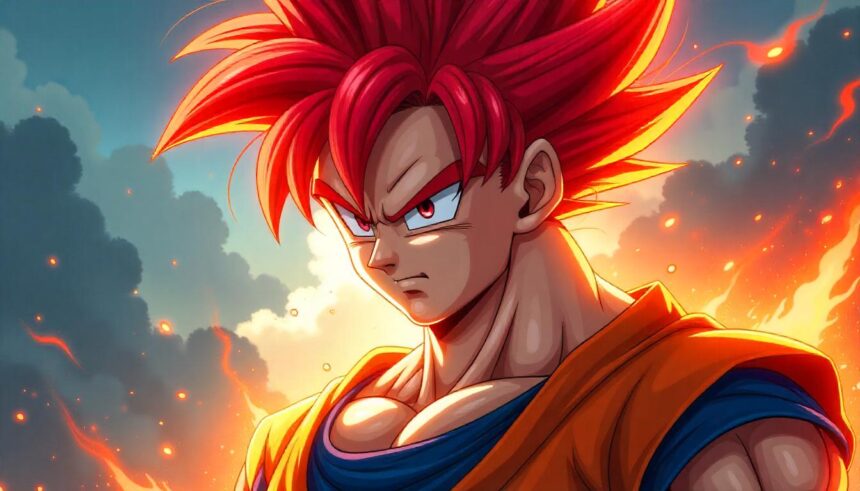Introduction to Goku and his significance in pop culture
Goku, the beloved Saiyan warrior from the iconic anime series “Dragon Ball,” has captured hearts and minds around the world. With his unstoppable spirit and epic battles, he has become a symbol of determination and friendship in pop culture. Whether you’ve watched every episode or just seen him in memes, there’s something universally appealing about this spiky-haired hero.
Have you ever wanted to bring Goku to life on paper? Drawing him can be an exhilarating experience that taps into your creativity while honoring a character loved by millions. In this guide, we’ll take you through each step of drawing Goku—from capturing his expressive face to mastering those trademark hair spikes. Let’s unleash your artistic potential!
Understanding the basics of drawing
Drawing is an art that begins with basic shapes and lines. Every masterpiece starts as a simple sketch. Understanding these fundamentals helps to build your skills.
Start by familiarizing yourself with geometric forms like circles, squares, and triangles. These shapes are the building blocks of more complex objects. Practice drawing them from different angles to improve your perspective.
Next, focus on proportions. Recognizing how various parts relate in size will enhance your overall composition. Take time to observe real-life subjects or images for better accuracy.
Line work is essential too. Experiment with pressure and stroke techniques to create depth and texture in your drawings.
Don’t forget about practice! The more you draw, the more comfortable you’ll become with the basics, paving the way for tackling characters like Goku effortlessly.
Step-by-step guide on how to draw Goku’s face
Start with a basic oval shape for Goku’s face. This will act as your foundation. Make sure to leave enough space at the top for his spiky hair.
Next, sketch two horizontal lines across the oval to mark where his eyes and mouth will go. Position the eyes slightly above the midpoint of the oval. Draw them large and expressive, capturing that iconic anime style.
For Goku’s nose, keep it simple—a small curve or triangle works well. Place his mouth just below this line, giving him that signature grin.
Now add details like eyebrows; they should be angled and bold to reflect his fierce personality. Don’t forget those distinctive cheekbones!
Refine your shapes before moving on to shading and other features. Keep it light so you can adjust easily as you continue drawing Goku’s unique expressions.
Adding details and shading to create a dynamic effect
Adding details and shading to your Goku drawing is where the magic truly happens. It brings life and energy to your artwork, making it pop off the page.
Start with light strokes. Use a softer pencil for shadows in areas like under his chin or around the eyes. This subtlety creates depth without overwhelming your initial lines.
Next, consider highlights. Think about where the light hits his face—typically on his forehead and cheekbones. A white gel pen can add those sparkles that capture attention.
Textures matter too! Whether it’s Goku’s skin or clothing, varied shading techniques will give each element its unique character. Cross-hatching can suggest muscle definition while smooth gradients work wonders for skin tones.
Don’t rush this process; take time to layer your shades gradually. The effort will translate into a more dynamic image that resonates with viewers long after they’ve seen it.
Drawing Goku’s iconic hairstyle
Goku’s hairstyle is as iconic as the character himself. His spiky black hair captures a sense of energy and adventure. To start, sketch the basic shape with loose, flowing lines. Focus on creating that wild look.
Next, divide your drawing into sections to represent each spike more clearly. Goku’s hair isn’t uniform; some spikes stand tall while others are slightly curved or angled. Use sharp strokes for dynamic movement.
Pay attention to volume—his hair has a three-dimensional quality that gives it life. Add shading where necessary, particularly at the roots and between spikes, to create depth.
Don’t forget about highlights! These can give his hairstyle a glossy finish reminiscent of anime art styles. With practice, you’ll capture every aspect of Goku’s unforgettable mane perfectly!
The importance of proportions when drawing Goku’s body
When drawing Goku, proportions play a crucial role in capturing his dynamic and powerful form. His muscular physique is iconic and must be represented accurately to reflect his character’s strength.
Start by establishing the overall body shape. Goku has broad shoulders, a narrow waist, and strong limbs that create a well-balanced silhouette. Pay attention to the length of each limb; they should harmonize with the torso for realism.
Use basic shapes as guidelines. For instance, circles can represent joints while rectangles can illustrate muscles. This foundational sketch helps maintain correct dimensions throughout your drawing process.
Consider how Goku’s stance affects proportions too. When he’s in an action pose, like preparing for a Kamehameha wave, those angles shift dramatically. Capturing this movement enhances your artwork significantly.
Focusing on these aspects ensures that your rendition of Goku feels authentic and lively on paper.
Bringing the whole drawing together with clothing and accessories
Now that you’ve crafted Goku’s facial features and hairstyle, it’s time to bring the character to life with his iconic clothing. Goku is known for his bright orange gi, which consists of a loose-fitting top and pants. Pay attention to the folds and creases in the fabric; they add realism.
Start by sketching the outline of his outfit lightly. This makes adjustments easier if things don’t look quite right at first glance.
Next, focus on adding details like the blue underlayer and belt, as well as symbols found on his uniform. These elements are crucial in portraying Goku accurately.
Accessories also play a role—don’t forget about those signature wristbands! They enhance your drawing’s authenticity while emphasizing his warrior spirit. Each piece contributes something unique to your artwork, making it feel complete and dynamic.
Tips for capturing Goku’s energy and movement in your drawing
To capture Goku’s energy, focus on dynamic poses. Start with action stances that showcase his strength and agility. Think about how he moves during a fight; those fluid motions add life to your drawing.
Use lines of motion to emphasize speed. Curved lines can suggest movement direction, while sharp angles convey intensity. Experiment with varying line thicknesses for added depth.
Incorporate exaggerated facial expressions too. Goku’s determination or excitement is key to conveying his persona. Try different emotions as you sketch.
Don’t forget about the small details! Energy blasts or trails behind him can enhance that sense of motion further. They create an impression of power and urgency in your artwork.
Consider color choices if you’re adding them later on. Bright tones will help reflect his vibrant nature and make the drawing pop off the page.
Common mistakes to avoid when drawing Goku
When you embark on your creative journey to draw Goku, it’s essential to be mindful of common pitfalls that can hinder your progress. One frequent mistake is underestimating the importance of proportions. Goku’s character design relies heavily on exaggerated features and dynamic poses, so getting these elements right from the start will make a significant difference.
Another common error is skipping the foundational shapes. It’s tempting to dive straight into details, but starting with basic geometric forms helps establish structure and balance in your drawing. Remember that every great artwork begins with a solid foundation.
Additionally, many artists struggle with capturing Goku’s expressions. His emotions are vivid and energetic, so take time to practice different facial expressions before finalizing those features in your drawing.
Don’t overlook lighting and shading; they play a crucial role in bringing depth and life to your work. Experimenting with shading techniques can elevate your art significantly.
By being aware of these mistakes and focusing on improving each aspect step by step, you’ll find yourself creating an impressive representation of one of pop culture’s most beloved characters—Goku! Keep practicing; even experienced artists learn something new every day.







